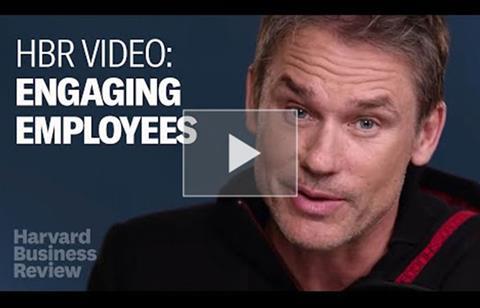
If someone were to ask you who is the most engaged employee in the world, what would you reply? What characteristics would this person need to possess to earn such a grand title? Would it be someone with a huge salary, or someone who just loves what they do and believes in the company? Is it someone who feels so purposeful and fulfilled that they can give 110% all the time? There are so many variables which may create what an engaged employee looks like, and it differs from company to industry, job role and hierarchy.
The question which needs to be asked, is what do employees really want from their roles and workplaces in order to be (that) engaged? Plus, the past 18+ months of a global pandemic has changed the dynamics in terms of being engaged, due to working from home, home-schooling, being away from a physical team and now hybrid working for some where teams have been dispersed. Furthermore, it goes without saying that over the last few decades, the demands and desires of employees have evolved and changed drastically, where the emphasis on what is important has shifted. Financial security is of course, crucial, however there is a deeper sense of purpose, fulfilment, connection and relationships which have come into play.
Harvard Business Review (HBR) created a digital series on the most pressing topics facing business today, called The Big Idea. Marcus Buckingham explains about engaging employees, and portrays what he believes the ideal, most engaged employee in the world, Barbara, looks like.

There is a plethora of reasons why employees work ranging from earning a salary, to believing in the cause / product or service, to fulfilling personal goals and feeling like they are contributing to something larger than themselves. Maslow’s Hierarchy of Needs can often be cited as a business model, where first and foremost employees need to take care of themselves physiologically – they need money for food and bills. Thereafter employees’ needs need to be fulfilled, ranging from security needs – stable job, safe working environment, career progression – to belonging and esteem needs, encompassing cooperative co-workers, being part of a team, getting recognition and so forth.
But investing in employee engagement doesn't necessarily make employees happy. According to Gallup’s State of the Global Workplace, only 15 percent of employees are engaged in the workplace. Employee engagement does not equal employee happiness or employee satisfaction. They are connected, yet not the same. In essence, employee engagement is the emotional commitment the employee has to the organisation. When employees feel engaged, they do their best work to achieve the organisation's goals and be part of the organisational ecosystem.
So, how engaged are your employees? What measures have you got in place to ensure engagement amongst all your teams, whether they're back in the office, or still working remotely?
Download Xexec’s e-Book to discover how engaged employees’ productivity and performance can increase and ultimately set you apart from your competition.






























